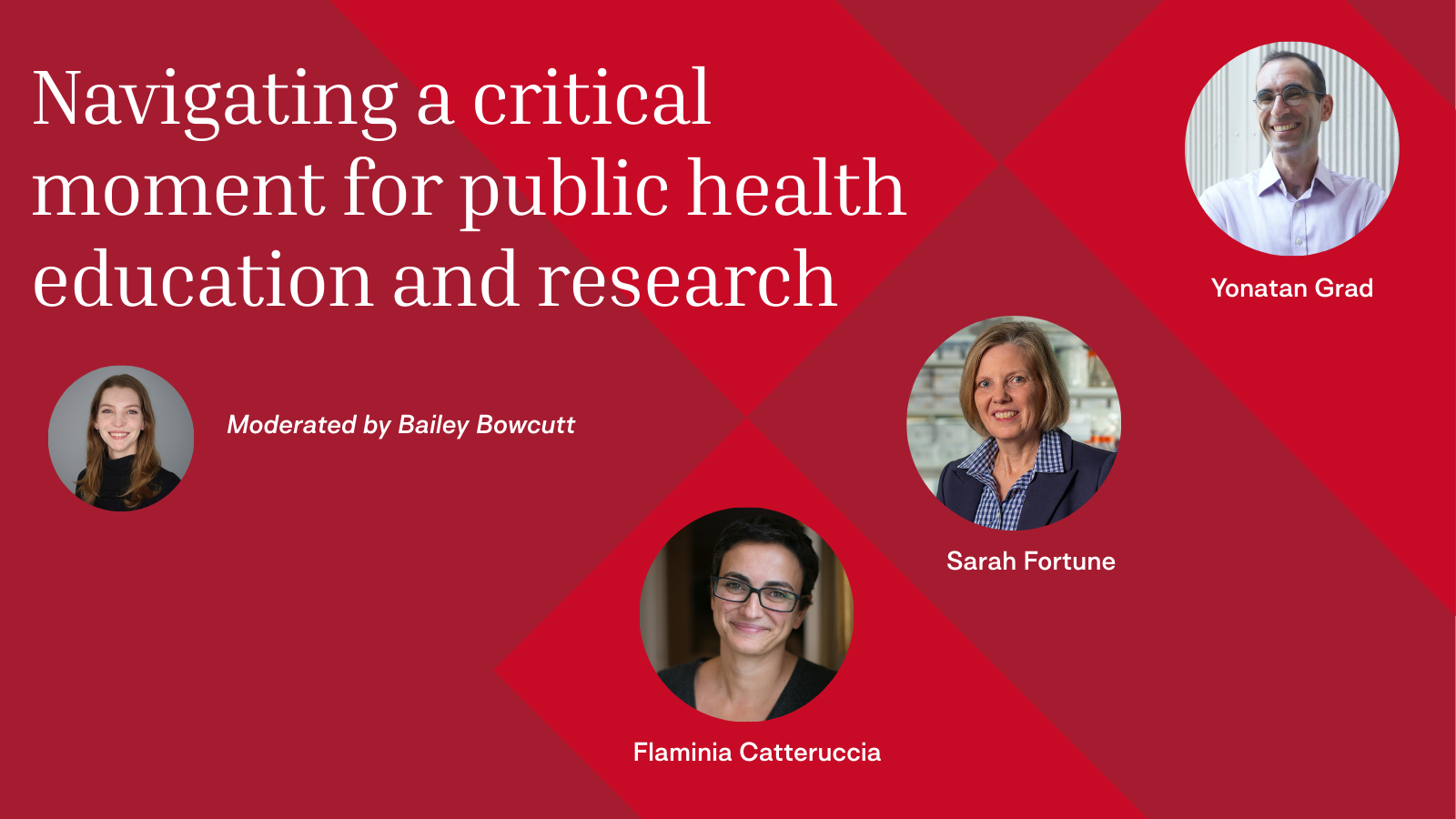Opinion: How to communicate during a public health emergency

Amal Cheema is a member of the MPH Class of 2023 at Harvard T.H. Chan School of Public Health and the Class of 2024 at the Geisel School of Medicine at Dartmouth. She drafted the following list of communications best practices for public health leaders as part of the Fall 2022 Harvard Chan class “Engaging the Media: A Practical Look At Public Health Communication.”
Based on our experience navigating the COVID-19 pandemic, I’ve assembled some best practice on crisis communication for public health leaders navigating a public health emergency created by a previously unknown pathogen.
Information and content
Inform the public as new information becomes available. Timely communication begets trust. Allow people to prepare by making them aware of potential risks. Advise them on how they can protect themselves, of when and how to take precautions. Tell them when they will hear from you next; set expectations by providing specific and regular times when updates will be provided (e.g., daily press conferences at the lunch hour).
Prepare to tell the truth. Even if inconvenient or uncomfortable, report the truth. In crisis, complete information is rarely available. Instead, focus on providing accurate, up-to-date information on what we do and do not know. Admit informational vulnerabilities but focus on what we’re doing to learn more.
Give context to action. The science behind any action ought to be communicated simply. However, providing context – what, when, how, etc. – is imperative to public buy-in. Let people know how they can prevent disease and how they can get help.
Connect new information to existing frameworks. Help the public better understand any newly proposed public health intervention in context of existing efforts (e.g., vaccination). Explain how what we ask them to do is in line with actions they normally would take or supports values they want to uphold.
Messaging
Keep it simple but accurate. Use plain language; don’t use jargon and technical verbiage. Instead of presenting risk in as ratios or the like, help the public understand what is most likely to happen. Consider well-placed analogies or metaphors to create a shared understanding. In any communication, think of what the headline will be and cater your words to it. Start and end with your singular and significant message.
Reassure and provide purpose. Don’t resort to fear mongering or language that creates panic. Creating a sense of empowerment and purpose is far more powerful in behavior nudges and changes. Set clear goals and develop a unifying vision around which people can rally. Appeal to sentiments and values of the public – whether they be a mover & shaker or a typically disengaged person.
Stay factual. Don’t speculate. Don’t repeat or refer to misinformation; refute it by providing the facts. Don’t make false promises. Be honest and transparent about the seriousness of the emergency without overstating the risks.
Lead by example. Communicating with calmness and compassion can set the tone of conversation. In asking the public to perform actions or make sacrifices, prepare to share what you are doing to find answers and solutions. Don’t shame individuals for their actions or inactions but invite and incentivize them to join community efforts.
Expect to walk back prior recommendations. The onslaught of new information will inevitably mean that you will need to redirect the message. Mistakes will be made – address them quickly. While it will be uncomfortable to change course, acknowledge uncertainties and explain the unknowns and knowns. In sharing the why of a decision, share the undesired consequences and how we’re deterring negative outcomes. Share predicted possibilities and pivots – but remember to balance any pessimism with optimism.
Take responsibility. When confronted about mistakes or errors, avoid shifting responsibility elsewhere. Talk about what the agency could do or influence. Even if the numbers are frightening or take the wrong turn, focus on what the agency will do to improve.
Logistics
Maintain a two-way line of communication. While you will rely on a small team to manage the crisis, external perspectives are critical to sound decision-making. Reach out to those stakeholders with whom you disagree.
Keep an open, empathetic dialogue with the public. Recognize the psychosocial toll of public health interventions and be empathetic to their sacrifices. Ask for and respond to concerns and feedback. Validate differing perspectives and lived experiences. Listen to lead.
Utilize multiple channels of communication, from social media to print to radio. Make it accessible to those with disabilities or hearing or visual impairments. Get the message across consistently, from the library down the street to the hardest-to-reach areas.
Partner with trusted messengers. Public health happens at the local level. Balance top-down approaches with bottom-up strategies that leverage social networks. Work with local departments, organizations, community leaders, and health care professionals who can get the message across in a culturally appropriate manner.
Repeat, repeat, repeat. Be or find your bully pulpit – speak incessantly. Reiterating a message 10 to 20 times should do. Don’t assume you’re making sense; make sure the public understands you.
In conclusion
Communicating to the public amid crisis requires adaptability and flexibility. Truth, trust, and transparency are the cornerstones of communication. In following the best practices, we can get information to the public quickly and effectively.
References
Tumpey A, Daigle D, Nowak G. Communicating During an Outbreak or Public Health Investigation | Epidemic Intelligence Service | CDC. CDC Epidemic Intelligence Service. Published September 25, 2019. Accessed December 12, 2022.
Mendy A, Lass Stewart M, Van Akin K. A leader’s guide to crisis communication during coronavirus | McKinsey. McKinsey & Company. Accessed December 12, 2022.
Igoe K. Developing Public Health Communication Strategies—And Combating Misinformation—During COVID-19. Executive and Continuing Education. Published April 3, 2020. Accessed December 12, 2022.


